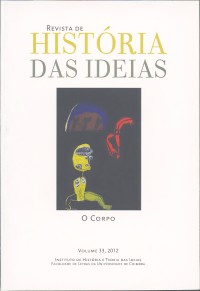Please use this identifier to cite or link to this item:
https://hdl.handle.net/10316.2/41364| DC Field | Value | Language |
|---|---|---|
| dc.contributor.author | Quintais, Luís | - |
| dc.date.accessioned | 2017-04-21T16:45:29Z | |
| dc.date.accessioned | 2020-09-30T11:27:08Z | - |
| dc.date.available | 2017-04-21T16:45:29Z | |
| dc.date.available | 2020-09-30T11:27:08Z | - |
| dc.date.issued | 2012 | - |
| dc.identifier.issn | 0870-0958 | - |
| dc.identifier.issn | 2183-8925 (digital) | - |
| dc.identifier.uri | https://hdl.handle.net/10316.2/41364 | - |
| dc.description.abstract | O autor escreve sobre um dos livros mais emblemáticos da produção de Bruce Chatwin (1940-1989). Em Songlines (1987), Chatwin transporta-nos através de uma concepção desterritorializada do universo aborígene australiano. A Austrália assemelha-se aí a um imenso "labirinto de caminhos invisíveis", aquilo que os europeus designaram por "trilhos do Sonho" ou "Songlines", entre outras nomeações. A espacialização do tempo sagrado é, para os aborígenes, mediada pelo canto. A realidade existe quando e porque é cantada, sendo a ontologia uma função do canto e do movimento. Para Chatwin, a concepção aborígene da realidade enquanto algo que depende de um acto criativo e perceptivo lembra Berkeley ou o budismo. O autor tenta ponderar acerca dos limites deste entendimento, dando algumas evidências da possibilidade do universo aborígene poder ser melhor descrito de acordo com a tese anti-representacionalista assumida por alguns sectores das neurociências cognitivas e filosofia da mente. | por |
| dc.description.abstract | The author writes about one of the most emblematic books of Bruce Chatwin's (1940-1989) oeuvre. In Songlines (1987), Chatwin carries us across a deterritorialized conception of the aboriginal Australian universe. There, Australia is likened to an huge "labyrinth of invisible pathways", something which the Europeans named as "Dreaming-tracks" or "Songlines", between other designations. The spatialization of time is, for the aboriginals, mediated by singing. Reality exists when and because it is sung, being the ontology a function of singing and movement. For Chatwin, the aboriginal conception of reality as something which depends on a creative and perceptive act reminds Berkeley or Buddhism. The author tries to ponder on the limits of this understanding, giving some evidence of the possibility of the aboriginal universe be more aptly described in accordance with the anti-representationalist thesis of some sectors of the cognitive neurosciences and philosophy of mind. | eng |
| dc.language.iso | por | - |
| dc.publisher | Imprensa da Universidade de Coimbra | - |
| dc.rights | open access | - |
| dc.title | Do canto: uma leitura de Songlines de Bruce Chatwin | por |
| dc.title.alternative | On singing: a reading of Bruce Chatwin's Songlines | - |
| dc.type | article | - |
| uc.publication.collection | Revista de História das Ideias vol. 33 | - |
| uc.publication.firstPage | 47 | - |
| uc.publication.lastPage | 55 | - |
| uc.publication.location | Coimbra | - |
| uc.publication.journalTitle | Revista de História das Ideias | - |
| uc.publication.volume | 33 | por |
| dc.identifier.doi | 10.14195/2183-8925_33_4 | - |
| uc.publication.orderno | 5 | - |
| uc.publication.area | Artes e Humanidades | - |
| uc.publication.manifest | https://dl.uc.pt/json/iiif/10316.2/41364/248657/manifest?manifest=/json/iiif/10316.2/41364/248657/manifest | - |
| uc.publication.thumbnail | https://dl.uc.pt/retrieve/11867832 | - |
| item.grantfulltext | open | - |
| item.fulltext | With Fulltext | - |
| Appears in Collections: | Revista de História das Ideias | |
Files in This Item:
| File | Description | Size | Format | |
|---|---|---|---|---|
| do_canto._uma_leitura_de_songlines.pdf | 253.8 kB | Adobe PDF |  |
Items in DSpace are protected by copyright, with all rights reserved, unless otherwise indicated.
